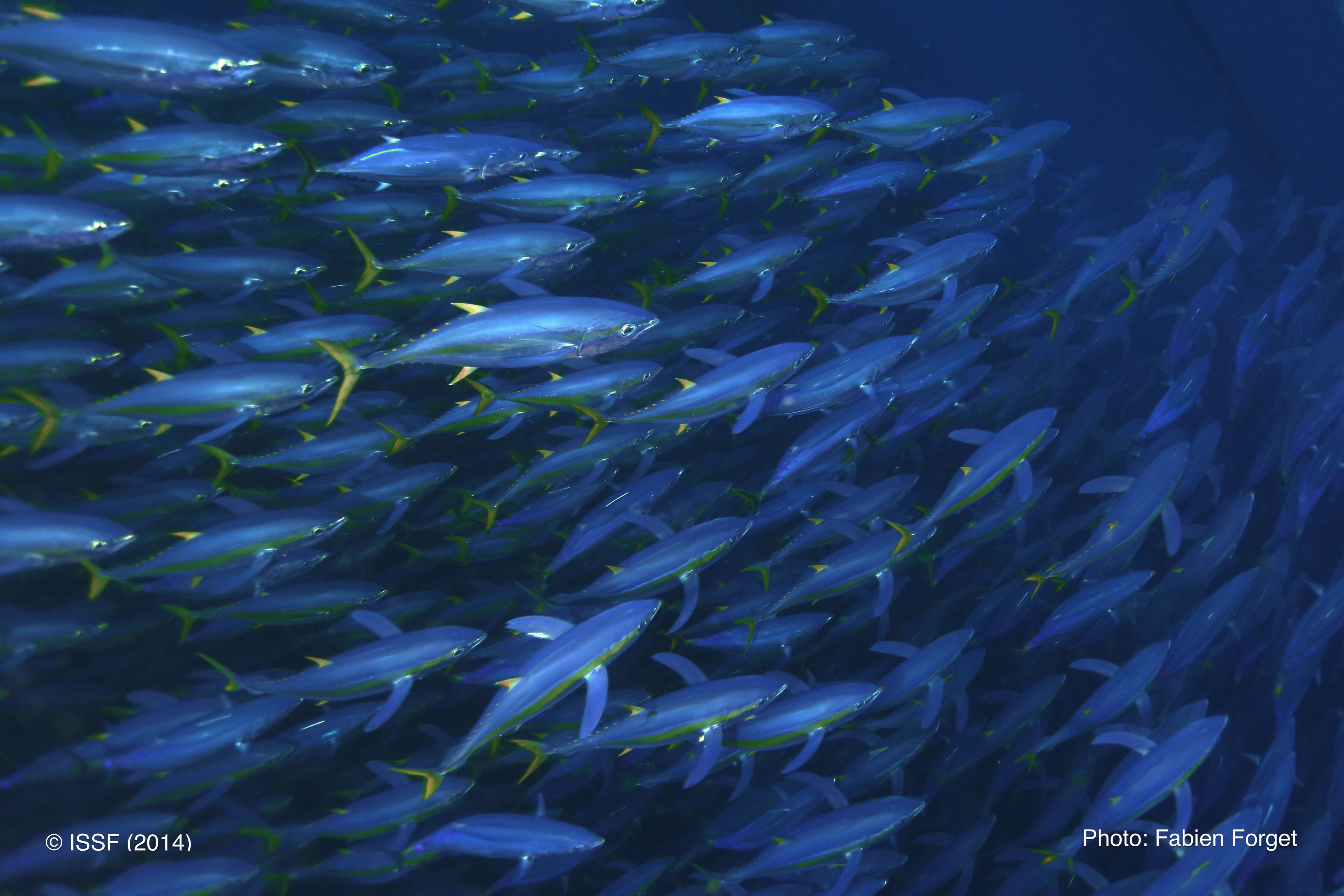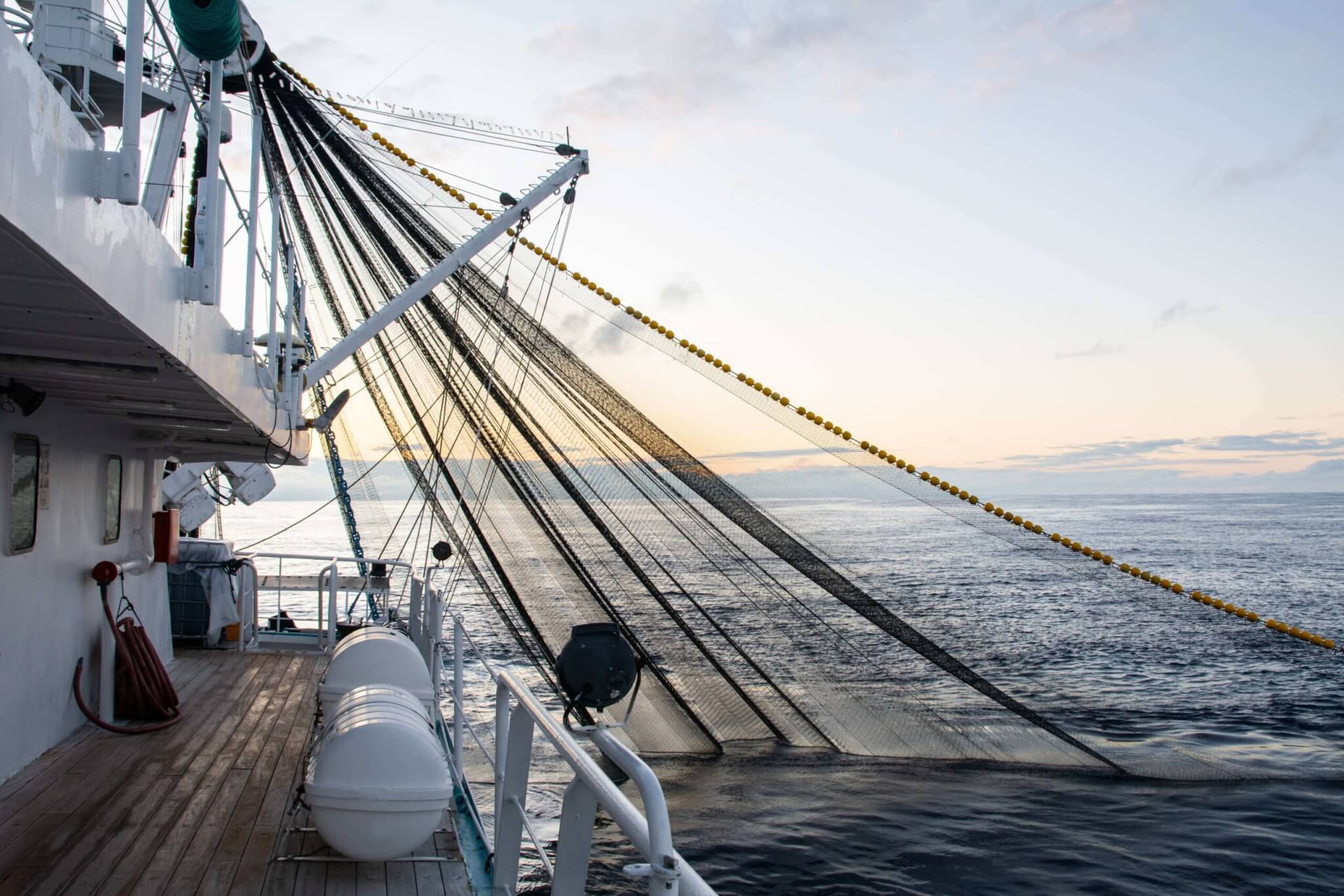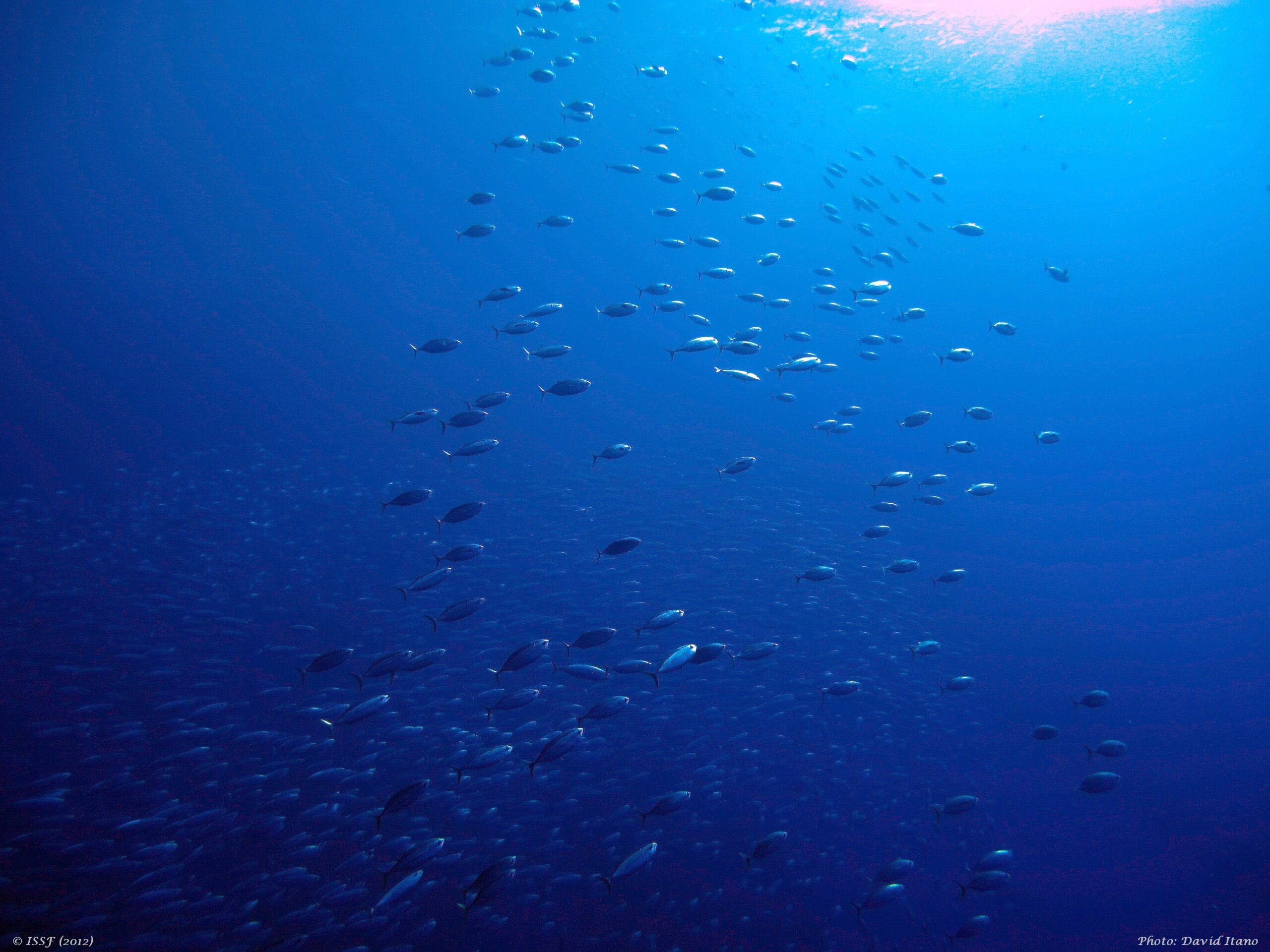
86% of Global Tuna Catch Continues to Come from Stocks at Healthy Levels, But Some Stocks Remain Overfished
Of the total tuna catch, 86% came from stocks at “healthy” levels — an unchanged share since last reported in October 2018 — according to the March 2019 International Seafood Sustainability Foundation (ISSF) Status of the Stocks report. Skipjack tuna stocks — which remain at healthy levels in all ocean regions — still comprise over one-half of the total catch.
ISSF publishes its signature Status of the Stocks report at least twice each year using the most current scientific data on major commercial tuna stocks.
In 2017, 58% of the #tuna catch was #skipjack, 28% was #yellowfin, 8% #bigeye, 5% #albacore, and 1% #bluefin. #StatusoftheStocks Share on XThe fishing mortality rating was changed for two stocks since the previous report: The Fishing Mortality rating for both Mediterranean albacore and Western Pacific yellowfin was modified from “yellow” to “green.” The ISSF Scientific Advisory Committee (SAC) determined that this change was needed to harmonize those ratings and the report’s ratings methodology.
Though many of the recent broad indicators of overall global tuna stock health are positive, there are several stocks of concern that should be noted:
- The Indian Ocean yellowfin stock has again been rated both as overfished and as suffering overfishing after a new stock assessment presented by the Indian Ocean Tuna Commission (IOTC) Scientific Committee in late 2018.
- Similarly, the Pacific Ocean bluefin stock is also considered to be overfished, and overfishing of this stock continues.
- Eastern Pacific bigeye is experiencing overfishing. Fishing mortality for this species is high.
- Two consecutive assessments have concluded that Atlantic Ocean bigeye is overfished and that overfishing is still occurring.
Key Statistics in the Report
- Total catch: In 2017, as reported in the new report, the total major commercial tuna catch was 4.8 million tonnes. More than half of the total catch (58%) was skipjack tuna, followed by yellowfin (28%), bigeye (8%) and albacore (5%). Bluefin tunas (3 species) accounted for only 1% of the global catch. These percentages changed only slightly from the October 2018 Status of the Stocks report.
- Abundance or “spawning biomass” levels: Globally, 65% of the 23 stocks are at a healthy level of abundance, 13% are overfished and 22% are at an intermediate level. In terms of total catch, 86% come from healthy stocks, 10% from overfished stocks and 4% from stocks at an intermediate level. Unchanged from the last report, the stocks receiving orange scores — indicating overfished status — were Atlantic Ocean bigeye, Pacific Ocean bluefin and Indian Ocean yellowfin.
- Fishing mortality levels: 78% of the 23 stocks are experiencing a well-managed fishing mortality rate, 18% are experiencing overfishing, and 4% have a high fishing mortality rate.
- Largest tuna catches by stock: The five largest catches in tonnes, unchanged since the previous report, are Western Pacific Ocean skipjack, Western Pacific Ocean yellowfin, Indian Ocean skipjack, Indian Ocean yellowfin and Eastern Pacific Ocean skipjack.
- Tuna production by ocean region: More than half (52%) of the world’s tuna is harvested from the Western and Central Pacific Ocean, followed by the Indian Ocean (20%), Eastern Pacific Ocean (13%) and Atlantic Ocean (11%). Catch from Pacific-wide stocks accounts for around 3% of the global catch, while catch in the Southern Hemisphere accounts for less than 1%.
- Tuna production by fishing gear: 65% of the catch is made by purse seining, followed by longline (11%), pole-and-line (8%), gillnets (4%) and miscellaneous gears (12%). These percentages have changed only slightly since the October report.
About the Report
There are 23 stocks of major commercial tuna species worldwide — 6 albacore, 4 bigeye, 4 bluefin, 5 skipjack, and 4 yellowfin stocks. The Status of the Stocks summarizes the results of the most recent scientific assessments of these stocks, as well as the current management measures adopted by the RFMOs. Updated several times per year, Status of the Stocks assigns color ratings (green, yellow or orange) using a consistent methodology based on three factors: Abundance, Exploitation/Management (fishing mortality) and Environmental Impact (bycatch).
ISSF produces two reports annually that seek to provide clarity about where we stand — and how much more needs to be done — to ensure the long-term sustainability of tuna stocks: the Status of the Stocks provides a comprehensive analysis of tuna stocks by species, and the Evaluation of the Sustainability of Global Tuna Stocks Relative to Marine Stewardship Council (MSC) Criteria provides scores for the stocks and RFMOs based on MSC assessment criteria. The MSC-certified fisheries list (Appendix 2) in Status of the Stocks complements the Evaluation report. Together, these tools help to define the continuous improvement achieved, as well as the areas and issues that require more attention.
In addition, ISSF maintains a data-visualization tool based on its Status of the Stocks report. The “Status of the Stocks Tool” is located on the ISSF website and accessible through the Status of the Stocks overview page; users can easily toggle through tuna stock health indicators and filter by location, species and other key stock health and catch factors.


